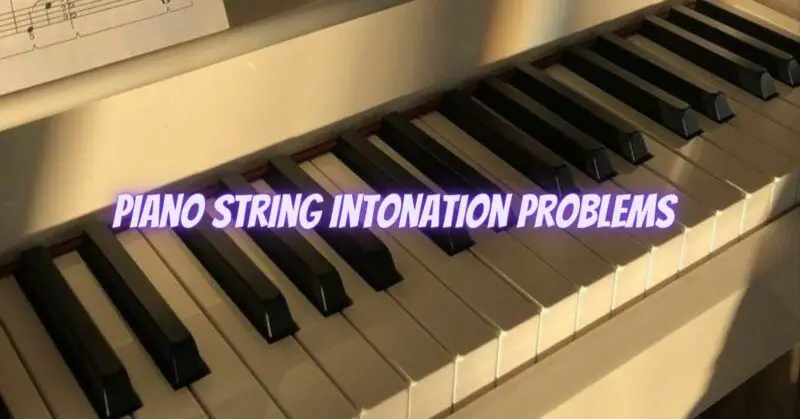Intonation is a crucial aspect of a piano’s sound quality, as it determines whether each note produces the correct pitch. When piano string intonation problems arise, it can lead to a lack of harmony and accuracy in the instrument’s sound. As a pianist or piano technician, understanding common intonation issues and their solutions is essential to maintaining an optimal playing experience. Here are some of the typical piano string intonation problems, along with their causes and possible solutions:
1. Pitch Drift: Pitch drift occurs when the piano’s strings gradually go out of tune over time. This can be caused by changes in temperature and humidity, string fatigue, or even settling in the piano’s structure.
Solution: Regular piano tuning is the most effective way to address pitch drift. Tuning the piano at least twice a year, or more frequently if necessary, will keep the strings in optimal tune.
2. Uneven Tuning Across the Keyboard: Sometimes, certain notes on the piano may sound in tune while others are noticeably out of tune. This unevenness can be attributed to the inharmonicity of the strings, which means that higher notes are intentionally tuned slightly sharp to compensate for human hearing.
Solution: Adjusting the intonation while considering the stretching effect of inharmonicity is essential to achieving a more balanced sound across the keyboard. Professional piano technicians are skilled at addressing these complexities.
3. Incorrect Hammer Strike Point: If the hammer strike point (the point at which the hammer hits the string) is not accurate, it can result in the strings producing incorrect pitches or uneven sound quality.
Solution: Adjusting the hammer strike point is a task that requires precision and expertise. A qualified piano technician can ensure that the hammer strikes the strings at the appropriate point to produce the correct pitch.
4. Unresponsive or Slow Hammers: Hammers that respond slowly or fail to return promptly after striking the strings can lead to poor intonation and muffled sound.
Solution: Proper regulation and voicing of the piano hammers can improve their responsiveness. A piano technician can make adjustments to the hammer action to achieve a more even and responsive feel.
5. String Buzzing: String buzzing can occur when the strings vibrate against other parts of the piano due to wear, loose components, or changes in humidity.
Solution: Identifying the source of the buzzing and addressing it promptly is crucial. A piano technician can inspect the instrument and make any necessary adjustments or repairs to eliminate the buzzing sound.
6. Inharmonicity: Inharmonicity is a natural phenomenon in pianos where higher notes have more noticeable overtones that cause the perceived pitch to be slightly sharp compared to the ideal pitch.
Solution: Inharmonicity is a characteristic of piano strings and is usually not a problem that needs fixing. Properly adjusting the piano’s overall intonation will account for inharmonicity and create a balanced sound.
Conclusion: Addressing piano string intonation problems is essential to maintain a harmonious and accurate sound on the instrument. Regular tuning, proper regulation, voicing, and professional assistance when needed will help keep the piano’s strings in optimal tune. By addressing intonation issues promptly, pianists and piano technicians can ensure that the instrument continues to produce a beautiful and resonant sound that inspires musicians and listeners alike.


